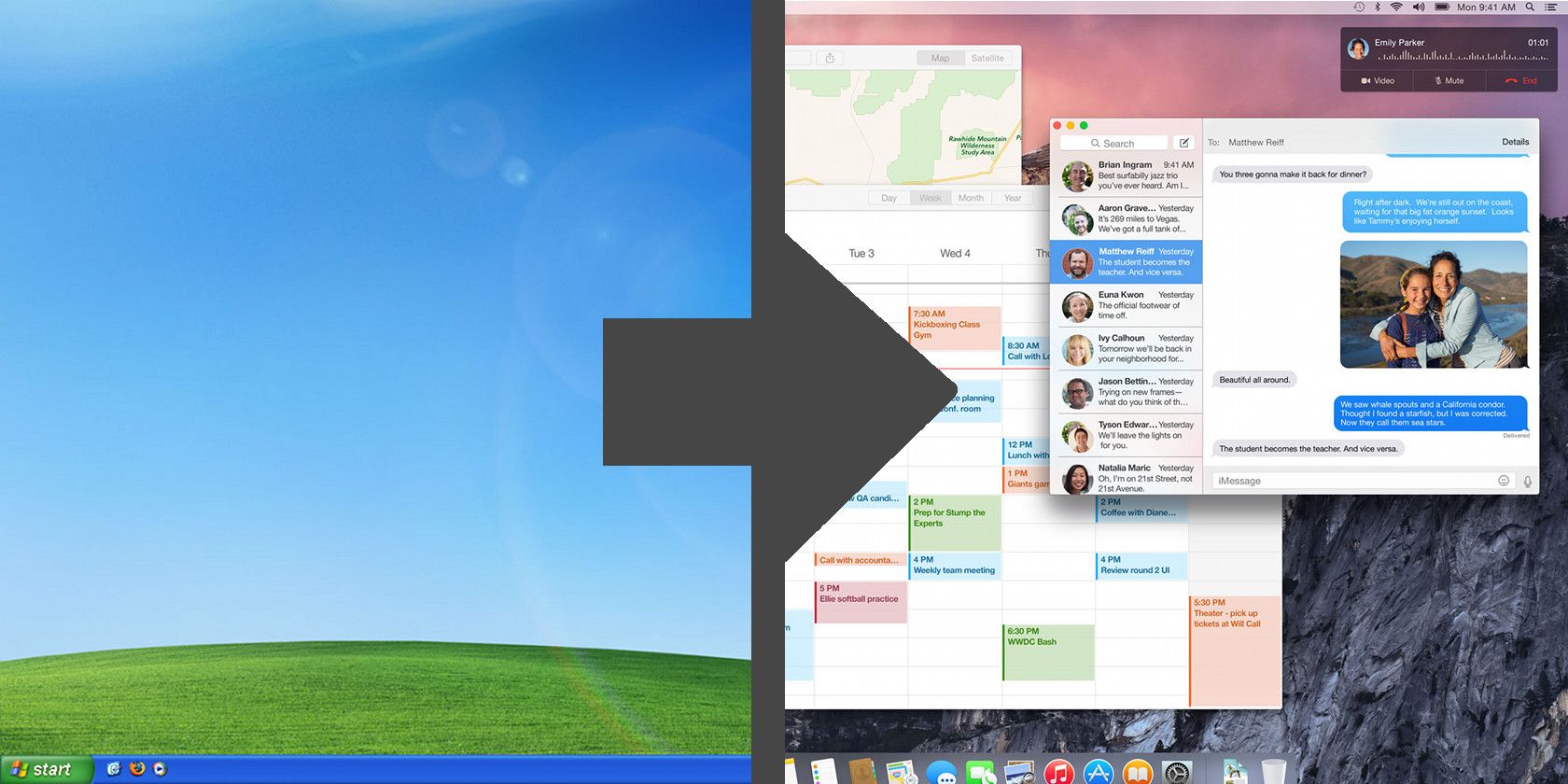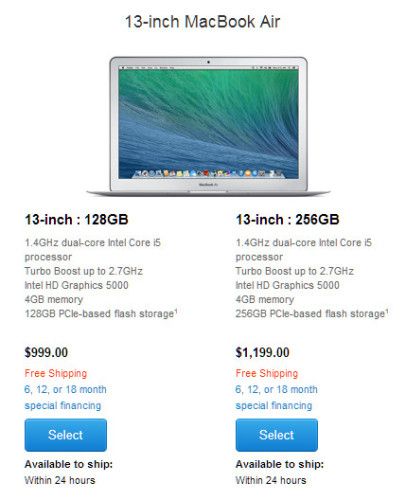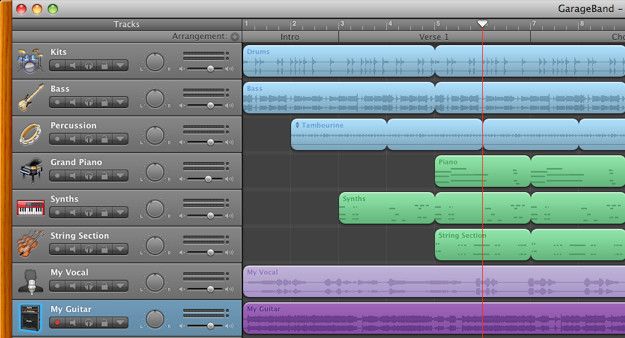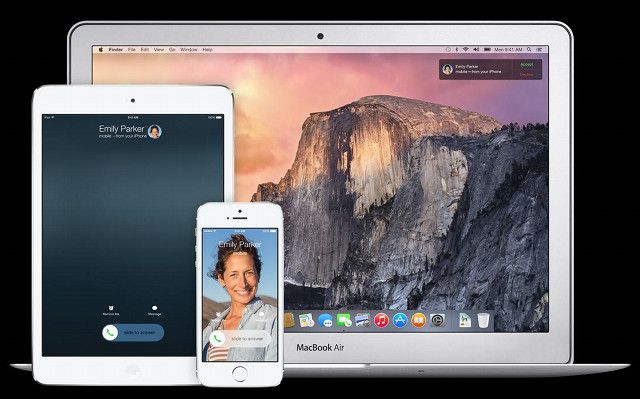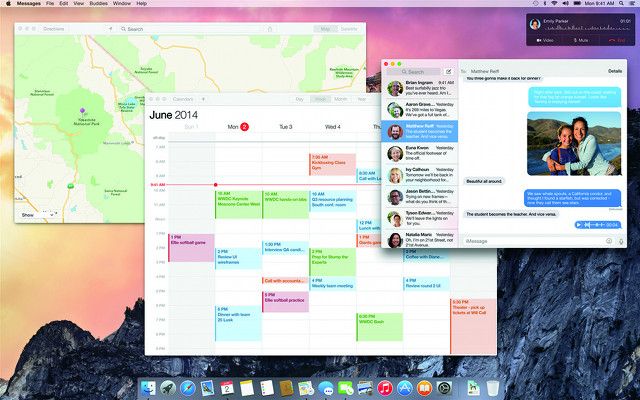Users of Windows XP (and, to a lesser extent, Windows Vista and 7) have an unhappy upgrade path ahead of them. Windows 8 has been widely criticized for its compromised approach that tries to span desktops and tablets but doesn't work well on either, yet Microsoft shows no immediate sign that it intends to change course. Users simply don't have a choice.
Or perhaps they do. While Windows has given desktop users the middle finger, Mac OS X has consistently improved. Maybe it's time to ditch Windows entirely and pick up a MacBook Air instead.
The Air Is Affordable
Apple's original MacBook Air was a beautiful machine and absurdly thin for its time, yet its price tag made it difficult to recommend. That's changed, however, as an 11-inch Air is now $899 and the 13-inch Air is $999.
Both have Intel Core i5 processors, four gigabytes of RAM and a 128GB solid state drive. While these specifications aren't mind-blowing, they are on par with Windows 8.1 competitors like the Dell XPS 13, Samsung Series 9 and Lenovo U310. Some PC systems like the ASUS Zenbook UX301 and Acer Aspire S7 are hundreds more than the Air, making it a bargain by comparison.
Admittedly, there is a downside to the Air: the display. Apple has not yet upgraded it to Retina, so you're dealing with 1366x768 on the 11-incher and 1440x900 on the 13-inch model. Most Windows laptops boast 1080p. However, both the Airs support output to 2560x1440 over Thunderbolt (and Thunderbolt-to-DisplayPort), which means you can pair either laptop with a large, high-resolution monitor.
Extra Value
There's more to a computer than the price, however. Users also need to consider what comes with the system. Most PC manufacturers offer little to no bundled software, but Apple still ships its hardware with a comprehensive suite.
The stars are undoubtedly iMovie, iPhoto and GarageBand, a trio of media applications that rival the best paid software available for Windows. Users also receive Pages, Numbers and Keynote, Apple's alternatives to Word, Excel and PowerPoint. And then there's a roster of less important but still helpful tools like Contacts, Maps, Messages and Reminders. You'd have to spend a few hundred dollars, and several hours scouring the Internet for apps, to replicate Apple's software on a Windows PC.
And don't forget Mac OS X itself. All computers come with a free operating system but Apple also offers future updates for free. Microsoft only offers minor updates for free; any major revamp is sold as a new version which must be purchased. The next version of Windows will likely be out in 2015 or 2016, and it will almost certainly be priced around $80, which is what Microsoft currently asks for a Windows 8 upgrade license.
Unique Features
There are also a number of handy features available through Mac OS X that Windows can't replicate without installing a significant number of third-party apps. Take social networking, for example. Apple has baked-in Facebook and Twitter, which means you can receive notifications from these social networks without a browser open, and you can quickly share links and photos directly from Finder, Safari or iPhoto. Adding social network support directly to the OS is much more convenient than using third-party apps that clutter your desktop and system tray.
With the upcoming OS X Yosemite, which will be released this fall, anyone who owns an iPhone or iPad can easily integrate these devices with their desktop via HandOff, a new feature that can route all messages and phone calls directly to your desktop. This works in reverse, too; so long as your iPhone is nearby you can make phone calls directly through the MacBook Air (or any other Mac you own).
And that's just the start. HandOff will also let users transfer open application sessions from a Mac to an iOS device and vice versa. Working on a project in Pages and want to take it with you? No problem! A simple swipe of a notification on your iPad is all that's required to transfer your session. All of the typical OS X apps support this feature and third-party developers can enable it, as well.
The Desktop Is Still The Desktop
Perhaps the most striking part of sitting down in front of a MacBook Air is how comfortable the interface feels compared to a modern Windows desktop. Anyone who has used a PC desktop or laptop in the past will likely find themselves at home quickly. There's no start menu, but there is a desktop, a dock which works like a taskbar and start menu combined, and a file system that, though obviously arranged a bit different from Windows, works as you’d expect a desktop file system to work. Nothing feels strange, unusual, half-baked or hobbled.
This is strange because Mac OS X isn't Windows. By all rights using it should not feel so familiar, but the decision to layer Metro interface elements over the desktop in Windows 8 has created this odd situation.
Desktop search is the perfect example. In Windows 8 it works like you'd expect it to work on a tablet. The search field expands from the right side and then takes up a limited portion of your view. Results are viewed in a list that's short on space and thus must be scrolled (or swiped) through frequently. All of this makes sense on a tablet where space is limited and swiping from the side of the screen is a common form of navigation, but none of it makes any sense on a laptop or desktop.
OS X Yosemite, by contrast, puts search smack in the middle of the desktop, where there's plenty of space to display relevant results. Your search is also retained in memory if you click outside the search window, a simple convenience that Windows 8 does not support.
In short, desktop search for the Mac (the feature is called Spotlight) works the way you'd expect a desktop application to work, while Microsoft's latest take on the feature operates like a mobile app - and this is just one example. A number of Windows 8's core interface features, including the Start Screen, Settings menu and Share menu, suffer similar woes.
Conclusion
You can, of course, purchase a Windows laptop for far less than a MacBook Air. The least expensive PC notebooks are just $299. But remember, those entry-level examples lack the battery life, portability and performance of the Air. If you want something similar, you'll need to buy an ultrabook, and most of those hover around $1,000 (and some are much more).
And while the Air is the most versatile option, it's not the only affordable choice. Apple's desktop Mac Mini starts at $599 and boasts a more powerful processor than the Air, though it has a mechanical hard drive instead of an SSD, and the basic iMac is $1,299. You could also consider a refurbished machine, as Macs are known for their reliability and longevity.
What do you think? Can OS X really replace Windows XP, or should users make do with Windows 8? Let us know in the comments.

